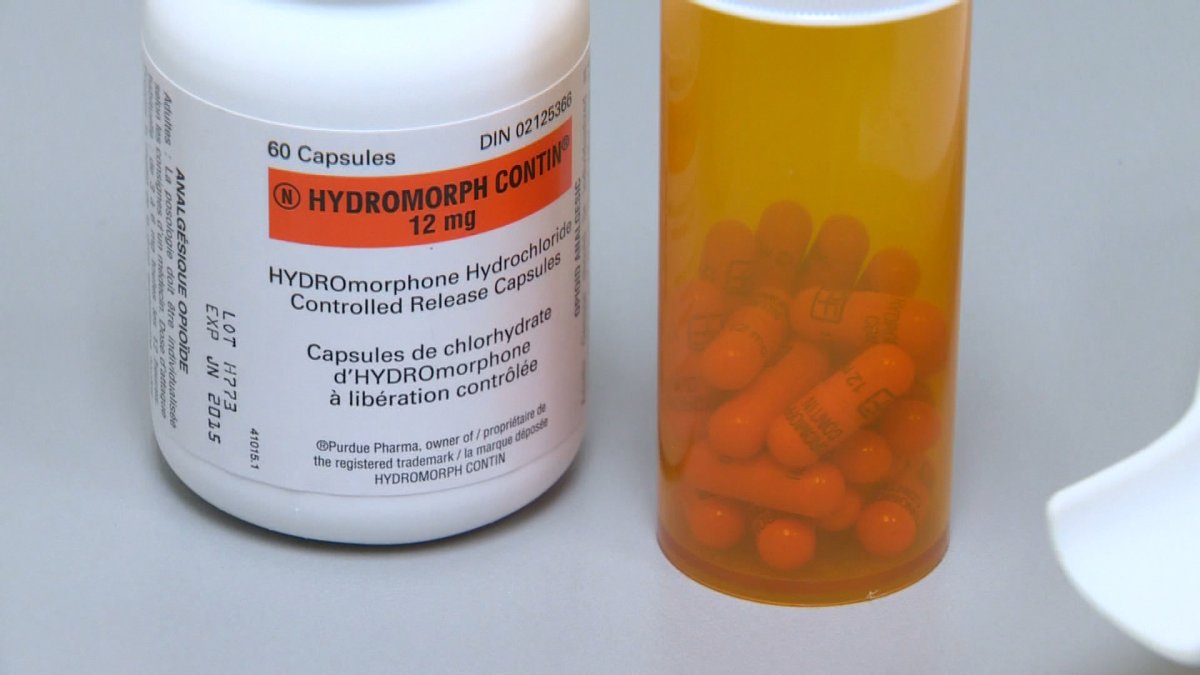It’s tough to tackle a health crisis when you don’t know exactly what you’re tackling: Who’s prescribing what pills to whom, in what dose and from what pharmacy? How many people end up in treatment, in jail or overdosed?

Several provinces have recently set up prescription monitoring programs, but in some – such as Ontario – doctors can’t access them. Police may have trouble connecting people arrested for trafficking with the people who prescribed the drugs they’re selling.
As Kentville, N.S. police chief Mark Mander puts it, “if we’re determining trends, it’s data from last year.”
Even information that is collected isn’t always shared between jurisdictions.
So when Global News asked 10 provincial health ministries what prescriptions people were getting, we tried to keep the request simple: Only four of the most common long-acting opioids, only going back three years. Even then, it was sometimes tough to square each province’s data – some classify drugs differently; some collect information on all prescriptions but most, at least until very recently, only track provincially funded pills. New Brunswick said it doesn’t track these at all. Nova Scotia, which does have a prescription monitoring program, stopped returning phone calls and e-mails in early March.
“The government’s had access to data all along on opioids but hasn’t done much with the data until now,” says David Juurlink, a doctor and researcher at Sunnybrook Health Sciences Centre. “It’s one thing to implement a data-collection exercise. But if you find things … that warrant action, then some sort of action has to be taken.”
***
GLOSSARY
- Roll Up To Win? Tim Hortons says $55K boat win email was ‘human error’
- Bird flu risk to humans an ‘enormous concern,’ WHO says. Here’s what to know
- Halifax homeless encampment hits double capacity, officials mull next step
- Ontario premier calls cost of gas ‘absolutely disgusting,’ raises price-gouging concerns
Fentanyl – an opioid available in multiple forms but commonly by a patch applied to the skin, meant to relieve pain over about 72 hours. When chewed, smoked or taken apart and injected, they provide a more immediate high that’s also much more likely to cause an overdose.
Hydromorphone – a type of opioid, the active ingredient in immediate-release drugs such as Dilaudid, and long-acting, such as Hydromorph Contin. One milligram of hydromorphone is five times more powerful than one milligram of morphine.
Hydromorph Contin – a patented long-acting opioid made by Purdue, with hydromorphone as active ingredient. Covered as a regular benefit in most provinces and under Special Authority in B.C. and Newfoundland and Labrador.
Morphine equivalence – a way of measuring how powerful opioids are, with morphine as the standard.
Opioid – a family of narcotics either naturally derived from opium and poppies or synthetically produced. Used primarily for pain, although they’ve also been used to treat coughs and addiction to other opioids (and diarrhea, according to the Centre for Addiction and Mental Health). Because they’re depressants, which slow down the part of the brain that controls breathing, they’re especially dangerous when paired with other depressants such as alcohol.
Oxycodone – a type of opioid, the active ingredient in immediate-release drugs such as Percocet and long-acting drugs such as OxyContin/OxyNEO. One milligram of oxycodone is twice as powerful as one milligram of morphine.
OxyContin – a patented long-acting opioid made by Purdue, with oxycodone as active ingredient. Phased out last year and replaced with OxyNEO.
OxyNEO – patented, long-acting opioid made by Purdue, designed to be tamper-resistant. Introduced last year to replace OxyContin. Available only under Special Authority or Exceptional Access programs in most provinces.
Special Authority/Exceptional Access – programs in most provinces that will only cover drugs once they’ve been through an extra layer of scrutiny, requiring doctors to make the case for why their patient needs them; often physicians must indicate that other methods of treatment have failed.
“Tamper-resistant” – Harder to crush, and therefore harder for addicts to snort or inject. Some are skeptical as to whether this actually curbs abuse: There’s no shortage of painstaking recipes online for crushing OxyNEO into a powder.





Comments